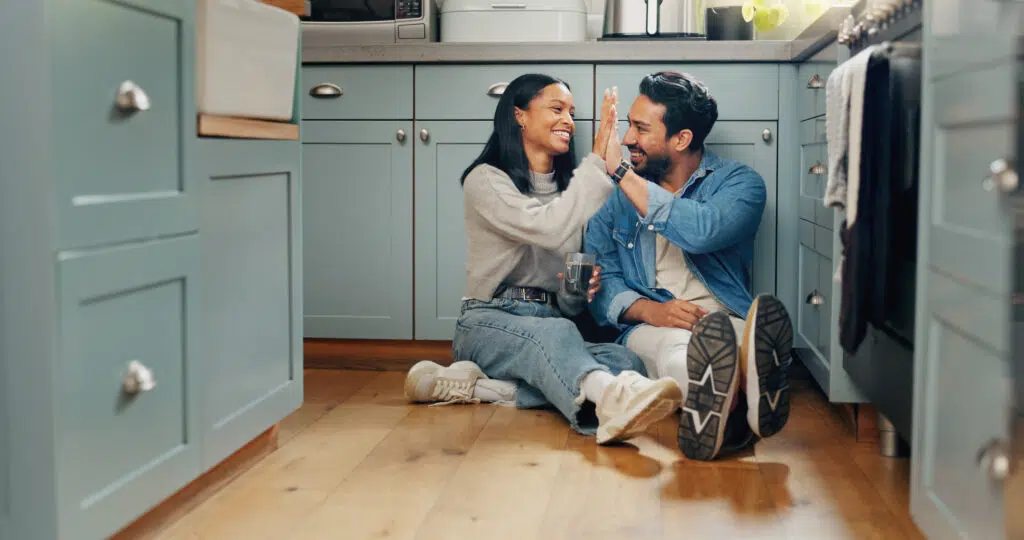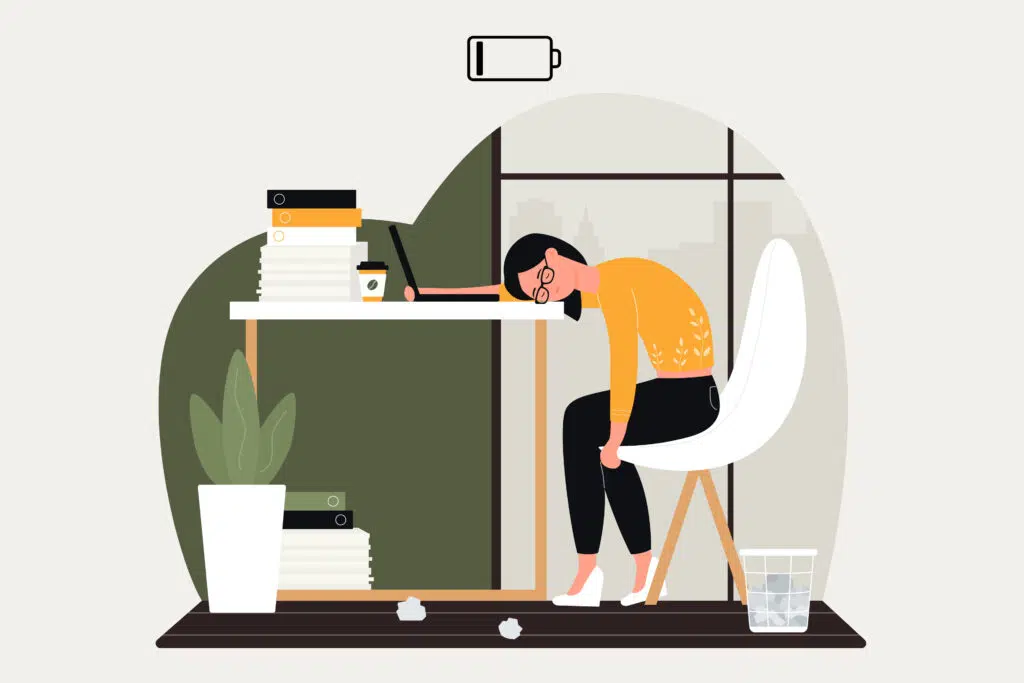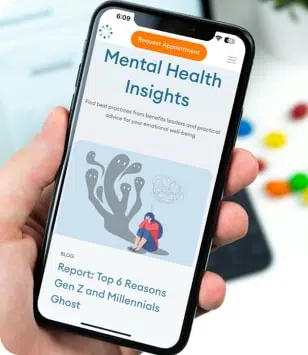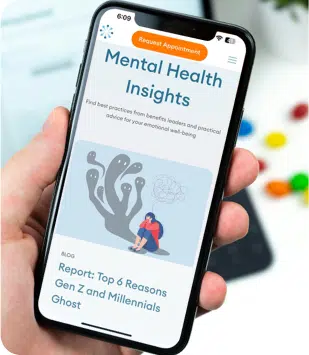What to Talk About in Therapy

You can talk about anything in therapy, but to get the most out of it, where should you start, and what should you avoid talking about? Whether you’re new to therapy or looking to work on something specific, there are no rules you need to follow or particular talking points. We’re going to discuss some ideas to get you started to take the pressure off therapy and help you feel comfortable.
What to Expect
Our research shows that 1 in 2 Millenials expect to have a mid-life crisis. The most common mid-life crisis experience is a career change followed by attending therapy. Statistics show that 90% of the public thinks that the United States is in a mental health crisis.
It’s normal to worry about what to expect in therapy sessions. The exact details can look different depending on your reason for therapy. Many therapists offer an initial consultation to discuss your needs, see if you’re a good fit, and determine if you feel comfortable. Feeling comfortable is an essential part of therapy and building a solid therapeutic relationship, as you will need to open up.
Therapy is a collaborative experience that can evolve with you. Here are some things you can expect:
- Format: Therapy sessions usually last 45-60 minutes and can be scheduled regularly at a time that works for you.
- Length: The length of therapy will depend on your goals and reason for attending therapy.
- Therapeutic Process: Therapy is a safe space to talk about your feelings, thoughts, and experiences with a trained mental health professional.
Therapy is a process that’s not always linear. It’s a journey that aims to equip you with the tools to manage your mental health and improve your overall well-being. There are different therapeutic approaches, so the exact details of your therapy session will depend on your needs and challenges.
No Issue Is Too Small
No matter how small an issue may feel, nothing you say is irrelevant or too small. When looking for a therapist, the aim is to find someone who you feel completely comfortable talking to openly and honestly. It creates a foundation for safe exploration of your thoughts and feelings. If you feel stuck on what to say in therapy, try answering these prompts and writing down your responses as a good starting point to discuss with your therapist:
- Is there anything that’s bothering you lately?
- What specific situations make you feel anxious or stressed out?
Current Feelings
During your therapy session, your therapist will explore what brings you to therapy. Talk about your current thoughts and feelings. Remember, nothing is too small to talk about, and no emotion is off the cards. Throughout therapy, your therapist is trying to understand what is happening in your life so that they can create an effective way to help you. By talking about your current feelings, it helps your therapist to do the following:
- Identify patterns of behavior
- Develop healthy coping mechanisms
- Understand your experience
- Track your progress
Patterns and Behaviors
Therapists want to know about patterns and behaviors because this helps them identify and understand root issues. They can then help you develop healthy coping tools to manage and change behaviors in a positive way.
When you’re talking about patterns and behaviors, you can mention specific examples and talk about the thoughts and feelings that accompany the behavior. If you struggle to bring things up on the spot, keep a journal and track thoughts, feelings, and behaviors to discuss with your therapist.
If you get to therapy and have no idea what to say, that’s completely normal. Your therapist is trained to guide the session, so they may ask questions like:
- Can you tell me more about that situation and how you felt?
- What was going through your mind as that happened?
- How often does this happen to you?
Relationships
Relationships are one of the most common reasons people go to therapy. So many people experience relationship issues with romantic partners, friends, parents, family, and colleagues. Relationship problems can be a massive source of stress and anxiety.
If you’re going to therapy for a relationship, you may attend individually or as a couple, depending on the situation. While it can feel nerve-wracking to bring up relationships in therapy, it can be incredibly valuable to get an outside perspective on your connections, especially if they are causing you stress and anxiety. Here are some tips to talk about your relationships in therapy:
- Think about the specific relationship challenges you would like to work on and write some notes. Are you having a hard time with conflict resolution and communication, or is there a lack of intimacy in your relationship?
- Jot down concrete examples that really explain the difficulties you’re experiencing. This could be an argument or a specific behavior that you’re struggling to deal with.
- Consider your goals and what you would like to get out of therapy. Do you want to strengthen the relationship, improve communication, or make a tough decision?
Traumas
Talking about trauma in therapy can be incredibly challenging and complex, but it’s an important step in your healing journey. Bringing up a difficult experience or past trauma can bring up tough emotions, so try to think about how you could prepare for this, like practicing some relaxation techniques.
Remember, you don’t have to bring up every detail straight away in the first session. Think about what you feel comfortable sharing initially and start there. Consider writing down some notes beforehand so that you can organize your thoughts during your therapy session. You can start with whatever feels natural for you. This could be talking about how the trauma affects your life currently and letting your therapist guide the conversation. If you feel too overwhelmed, tell your therapist and take a break.
New Challenges
So, you may have a regular therapy session, and something new is coming up for you that you would like to talk about. Here are some ways you can talk about new challenges:
- Start by discussing the new challenge. Try to be clear and concise. If possible, provide context to help your therapist understand it better.
- Try to focus on your thoughts and feelings and explain how the new challenge impacts your emotional and mental well-being.
- Stay open, as your therapist may suggest new connections that you may not have thought about before.
Make Sure You Feel Comfortable
Finding the right therapist is crucial to helping you feel comfortable during therapy. To find the right fit, consider recommendations from friends, schedule consultations, and consider factors like gender, cultural background, and therapeutic approach. Open communication is key to therapy, and feeling comfortable is important. Share what would make you feel comfortable, and don’t be afraid to bring up any concerns.
Therapy is about progress and growth, not perfection, so be patient and kind to yourself. If you don’t feel comfortable sharing with your therapist or find that therapy isn’t helping, don’t give up on therapy altogether. Maybe you’re not connecting with your therapist, or the therapeutic approach isn’t working for you, or you need additional support.
Contact Thriving Center of Psych
If your mind goes blank during therapy, that’s fine. It’s incredibly normal to feel anxious about therapy and unsure of what to talk about. There are no right or wrong things to say; just try to focus on how you feel and go from there. Talking about the small stuff can be just as beneficial as delving into deeper topics, so take your time and be patient. Taking some notes before therapy when you feel more relaxed can be helpful if you get stuck.
If you’re working through difficult emotions or navigating tough life transitions, Thriving Center of Pych can help. Book an appointment with one of our dedicated therapists and take the first step towards improved well-being and a brighter future. We have offices located throughout the country, including New York and LA.

How to Manage Stressful Life Transitions and Events
From getting into college or having a baby to splitting from a spouse or experiencing the death of a loved one, life can surprise you with big wins and tear you down with loss. Life is filled with transitions, some happy, others stressful and difficult.

How Long Does it Take to Recover From Burnout?
If you’ve reached burnout, it describes a state of complete emotional, physical, and mental exhaustion. Between heavy workloads, toxic work environments, economic uncertainty, and a poor work-life balance, burnout is a very real problem that can affect all aspects of your health.

What is Mindfulness Therapy?
Mindfulness therapy involves using mindfulness techniques to increase awareness and learn to manage emotions more effectively. These techniques include paying attention to the present moment without judgment.

What is Dialectical Behavioral Therapy (DBT)?
Dialectical behavioral therapy (DBT) is a type of talk therapy developed to help people struggling with intense and overwhelming emotions and relationship difficulties.




